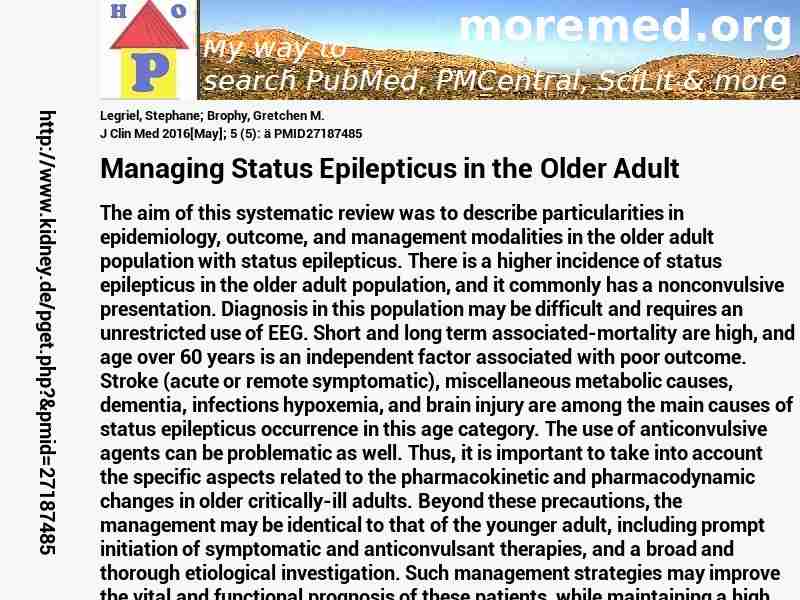
|
10.3390/jcm5050053
http://scihub22266oqcxt.onion/10.3390/jcm5050053

C4882482!4882482!27187485
 free free
 free free
 free free
|  
Warning: imagejpeg(C:\Inetpub\vhosts\kidney.de\httpdocs\phplern\27187485.jpg): Failed to open stream: No such file or directory in C:\Inetpub\vhosts\kidney.de\httpdocs\pget.php on line 117
 J+Clin+Med 2016 ; 5 (5): � J+Clin+Med 2016 ; 5 (5): �
Nephropedia Template TP
gab.com Text
Twit Text FOAVip
Twit Text #
English Wikipedia
|
Managing Status Epilepticus in the Older Adult #MMPMID27187485Legriel S; Brophy GMJ Clin Med 2016[May]; 5 (5): � PMID27187485show ga
The aim of this systematic review was to describe particularities in epidemiology, outcome, and management modalities in the older adult population with status epilepticus. There is a higher incidence of status epilepticus in the older adult population, and it commonly has a nonconvulsive presentation. Diagnosis in this population may be difficult and requires an unrestricted use of EEG. Short and long term associated-mortality are high, and age over 60 years is an independent factor associated with poor outcome. Stroke (acute or remote symptomatic), miscellaneous metabolic causes, dementia, infections hypoxemia, and brain injury are among the main causes of status epilepticus occurrence in this age category. The use of anticonvulsive agents can be problematic as well. Thus, it is important to take into account the specific aspects related to the pharmacokinetic and pharmacodynamic changes in older critically-ill adults. Beyond these precautions, the management may be identical to that of the younger adult, including prompt initiation of symptomatic and anticonvulsant therapies, and a broad and thorough etiological investigation. Such management strategies may improve the vital and functional prognosis of these patients, while maintaining a high overall quality of care.�
  
DeepDyve
Pubget Overpricing | 
|